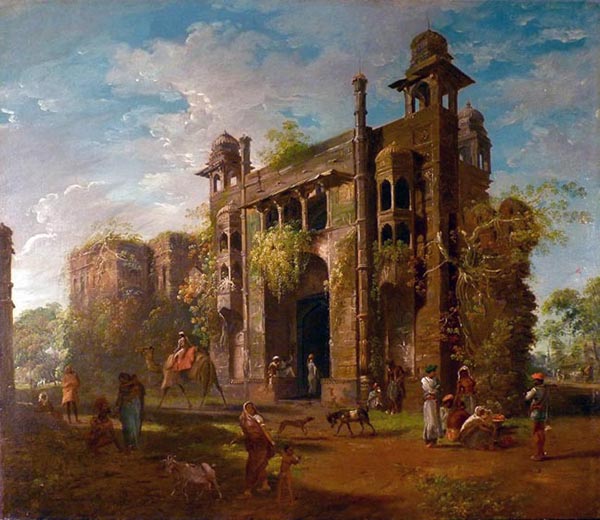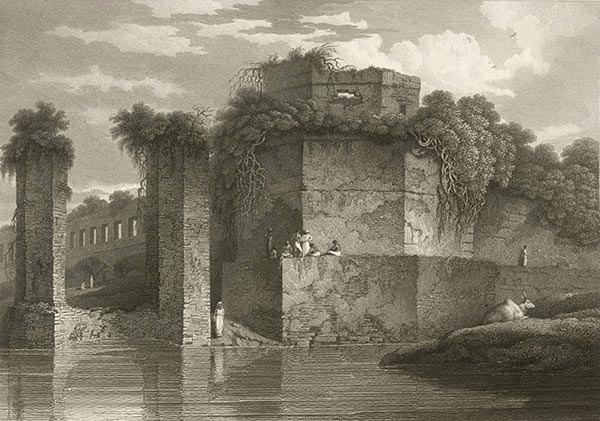Lalbagh Fort is the most popular and renowned fort and a great signature of art by Mughal Empire in Bangladesh. It is also known as Fort Aurangabad. It is located in Lalbagh of old Dhaka, hence named so. It is situated by the bank of the river Buriganga in a rich red soil.

Painting of the South Gate of Lalbagh Fort from 1787AVS Video Editor Pro 2022 Crack
History of Lalbagh Fort
Lalbagh Fort is an incomplete structure by a Mughal prince and later emperor himself named Muhammad Azam (third son of Aurangazeb). He started the work of the fort in 1678 during his vice-royalty in Bengal. He stayed in Bengal for 15 months. It remained incomplete when he was called by his father Aurangazeb to the capital Delhi.
Shaista Khan was the new Subedar (Governor) of Dhaka in that time, and he did not complete the fort. In 1684, the daughter of Shaista Khan named Iran Dukht (Pari Bibi) died there. After her death, he started thinking the fort as ominous and left the structure incomplete. Among the 3 major parts of Lalbagh Fort, one is the tomb of Pari Bibi.

Paining of Lalbagh Fort in 1816 by Charles D’Oyly
After Shaista Khan left Dhaka, the fort lost its popularity. The main cause was that the capital was shifted from Dhaka to Murshidabad. After the end of the royal Mughal period, the fort became abandoned. In 1844, the area achieved its name as Lalbagh replacing Aurangabad, so the fort as Lalbagh Fort.
After a certain time Mughal emperor Aurangazeb donated the fort to Shaista khan in memory of his daughter Pari Bibi. The successor of Shaista khan got revenue after his death by leasing the fort to the government. After 1853 the cantonment was replaced in Lalbagh Fort from Purana Paltan. Currently, the Archaeological department of Bangladesh is maintaining this Historical place. This has become a key tourist attraction in Dhaka. Almost 3 million people visit Lalbagh Fort every year.

The Mosque inside Lalbagh Fort
Different Parts of Lalbagh Fort
The Mosque
This mosque is situated in the western part of the complex, aligned with the tomb of Bibi Pari. The Lalbagh Fort mosque is a typical Bengali Mughal type – a rectangular structure crowned with three-domes. It is one of the finest examples of its kind, where the central dome is larger. The mosque is still in use and separated with a fence from the fort so that people can enter it for prayer without any ticket.

The Tomb of Pari-Bibi
The Tomb of Pari-Bibi
Of the Mughal buildings inside the fort, Bibi Pari’s Mausoleum is the most important, as it is a unique structure. It is the only building where black basalt from Rajmahal Hills, white marble from Rajputana and encaustic tiles of various colors, have been used to decorate its interior.
The 66′-0″ square monument stands in the center of a raised, stone-flagged platform. At each corner, it has four graceful octagonal turrets, which are capped by plastered kiosks with ribbed cupolas. The roof is covered by a false copped dome and crowned by a tall finial.
The interior of the mausoleum is divided into nine chambers including the 19′-0″ square central sepulcher. This chamber is entirely veneered in white marble and there is a simple stepped cenotaph in its center.
Of the other eight chambers, the dados of the corner rooms were originally decorated with glazed tiles of various colors but these have now been covered with plaster. The remaining rooms are still paneled with marble. Curiously the roofs of all the nine chambers are spanned by overlapping courses of massive black basalt slabs on the principle of the corbel.
Access to the tomb-chamber is from the south, through an entrance filled with a stone door jamb and a door of sandalwood, which is decorated with a Chinese cross pattern. Opening on the other three sides is blocked by fretted marble screens. The floor of the tomb chamber is attractively laid out in geometric patterns of marble and black stone.
In layout, the tomb of Pari Bibi resembles the more ambitious tomb of Humayun at Delhi.

The administrative building inside Lalbagh Fort
Residence of the Governor
The third structure in the fort is the residence of the governor Shaista Khan, which is a two-storied building with a projecting annex to the west, and contains the Audience Hall and the Hammam. The central hall contains a sunken ornamental fountain in the middle.
The hammam is covered by a dome which originally had an opening in it for light and ventilation. There is a masonry tank with steps leading into it, which contained temperate water for bathing. Except for the two end rooms which contain the stairs, the upper floor corresponds exactly in plan with that of the ground floor.

The South Gate of Lalbagh Fort
The South Gate
The main South Gate of the fort, facing the river, presents a grand appearance and rises gracefully in three stories. A lofty archway opens from the riverside into a domed square hall, which is flanked on either side by slender octagonal minerates with two stages of oriel windows. Each is topped by a cupola.
The four corners have pillared kiosks gracefully breaking the skyline. The entrance hall of the gateway is flanked on either side with guardrooms and staircases leading to the upper story. The southern and western fortification walls, which rise to a height of about 25′-0″ from the surrounding ground level, have a number of octagonal bastions, which are largely back-filled with earth, up to rampart level, have underground cells beneath.
Secret Tunnels in Lalbagh Fort
There are several secret tunnels in Lalbagh Fort, two of which used to reach to the now ruined Zinzira Fort of the Mughals located on the other side of the Buriganga. Others were built as mazes, so that attackers and intruders of the fort loose their way on them and starved to death. During the colonial period, many mutant soldiers of the Sipahi Revolution and also many British soldiers chasing them died here. These secret tunnels have been sealed permanently afterward.
Entry fees of Lalbagh Fort
- Local Tourists: 20 TK
- SAARC Country Tourists: 100 TK
- Other Foreigners: 200 TK
Visiting hours of Lalbagh Fort
Summer Season (April – September)
- Tuesday – Saturday: 10.00 AM – 01.00 PM, 01.30 PM – 06.00 PM
- Friday: 10.00 AM – 12.30 PM, 02.30 PM – 06.00 PM
- Sunday: Weekly Holiday
- Monday: 02.30 PM – 06.00 PM
Winter Season (October – March)
- Tuesday – Saturday: 09.00 AM – 01.00 PM, 01.30 PM – 05.00 PM
- Friday: 09.00 AM – 12.30 PM, 02.00 PM – 05.00 PM
- Sunday: Weekly Holiday
- Monday: 01.30 PM – 05.00 PM
